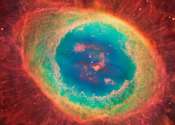Studying a Star Before it is Born
(PhysOrg.com) -- The first phase of a star's formation are thought to begin deep inside a natal cloud of gas and dust. In the earliest stages, material coalesces under the influence of gravity into so-called "dense cores," ...









